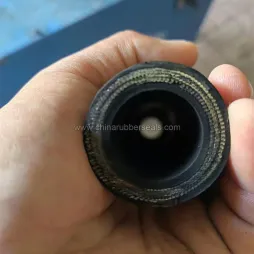How to Prevent Rubber Hoses from Cracking?
You're in the middle of a DIY project, eager to complete it, and suddenly, your rubber hose gives in, cracking and causing a water disaster. We've all been there, frustrated and wondering, "How do I keep rubber hoses from cracking?" Well, fret not! In this post, we'll explore practical tips and expert advice to ensure your rubber hoses stay in top-notch condition.
I. The Cracking Conundrum: A Common Woe
Let's dive into the heart of the matter. Rubber hose cracking is a widespread issue faced by many DIY enthusiasts and homeowners. The pain of discovering a cracked hose right when you need it the most is indeed a shared experience.
Have you ever found yourself scrambling for a quick fix as water spurts uncontrollably from a cracked hose, disrupting your project? If so, you're not alone.
II. Why It Matters: Understanding the Importance of Rubber Hose Maintenance
Before delving into solutions, let's grasp the significance of maintaining rubber hoses.
A. Common Causes of CrackingRubber hoses endure various stressors, from temperature fluctuations to bending and twisting. Understanding these factors is crucial to preventing cracks.
B. Consequences of Neglecting Rubber Hose MaintenanceNeglecting your hoses can lead to more than just inconvenience. Cracks may escalate, causing leaks that can damage property and increase water bills.
III. Practical Tips for Prevention: A DIY Enthusiast's Guide
Armed with the knowledge of potential issues, let's explore actionable steps to keep your rubber hoses intact.
A. Regular InspectionAdopt the habit of routinely inspecting your hoses for signs of wear and tear. Identify any weak points or visible damage, addressing them promptly.
B. Proper Storage TechniquesBelieve it or not, how you store your rubber hoses matters. Avoid leaving them exposed to harsh sunlight or extreme weather conditions. Opt for a cool, dry storage space.
C. Temperature ConsiderationsTemperature fluctuations can be detrimental to rubber. Be mindful of where you place your hoses, ensuring they are shielded from extreme heat or cold.
IV. Choosing Wisely: Selecting the Right Rubber Hose for the Job
Prevention starts with the right tools. Let's explore how to choose hoses that are less prone to cracking.
A. Understanding Different Types of RubberNot all rubber is created equal. Familiarize yourself with the types of rubber used in hoses and select one that suits your specific needs.
B. Assessing Hose FlexibilityA flexible hose is less likely to crack under pressure. When shopping for hoses, test their flexibility to ensure they can withstand bending without compromising integrity.
V. Hands-On Solutions: DIY Maintenance Techniques
Now that you've chosen the right hoses let's delve into simple maintenance practices to extend their lifespan.
A. Cleaning and LubricationRegularly clean your hoses to remove debris and prevent abrasion. Lubricate hose connections to ease bending and reduce friction.
B. Timely RepairsDon't ignore minor issues. Address small cracks or leaks promptly with patch kits or hose menders to prevent them from worsening.
Conclusion: Keep Your Hoses Happy, and They'll Keep You Dry
In conclusion, maintaining your rubber hoses is a small yet impactful investment in your DIY endeavors and household chores. By following these practical tips, you can spare yourself the frustration of unexpected hose failures and ensure your projects run smoothly.
So, the next time you pick up a hose, remember these simple steps, and you'll be well on your way to a crack-free, hassle-free experience.




Comments